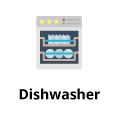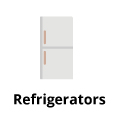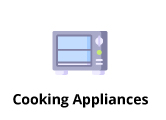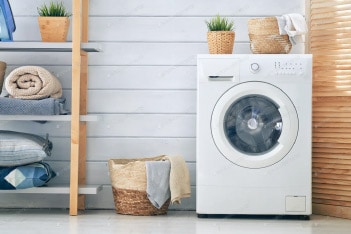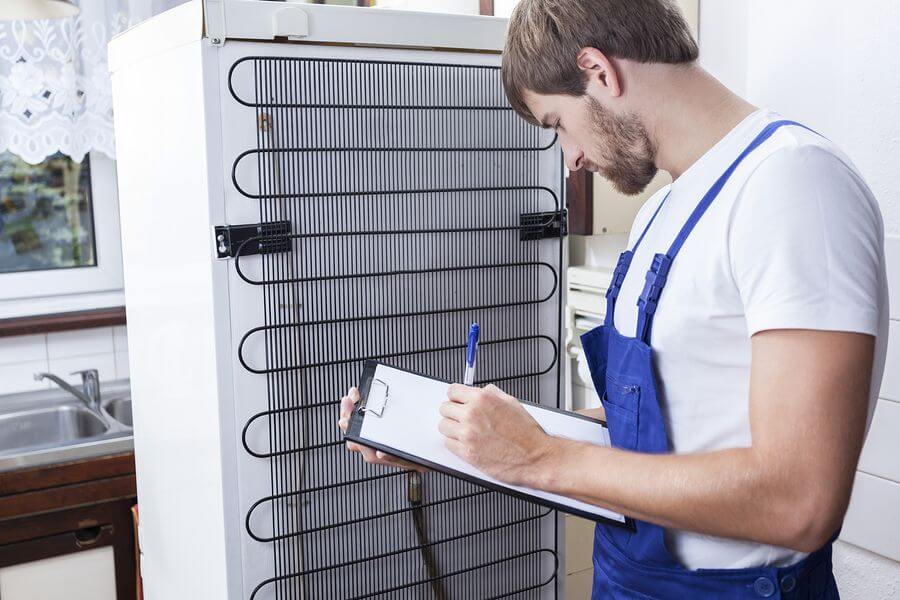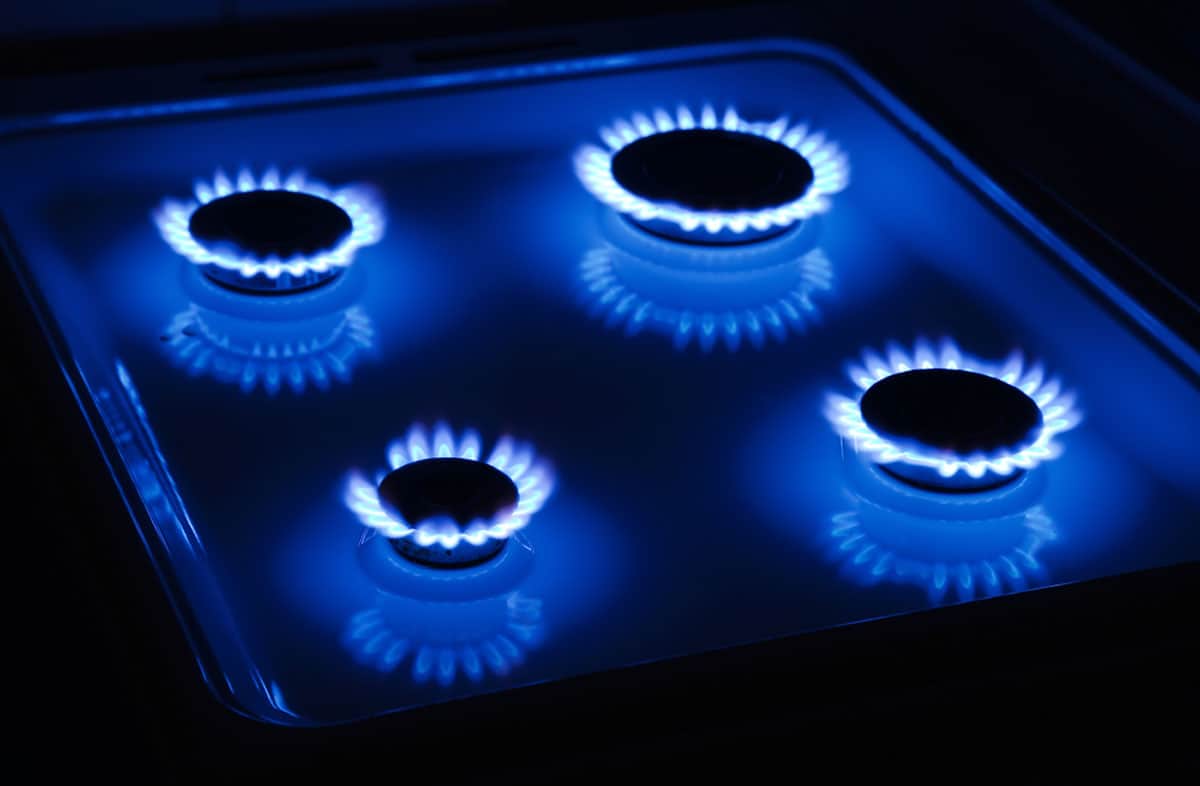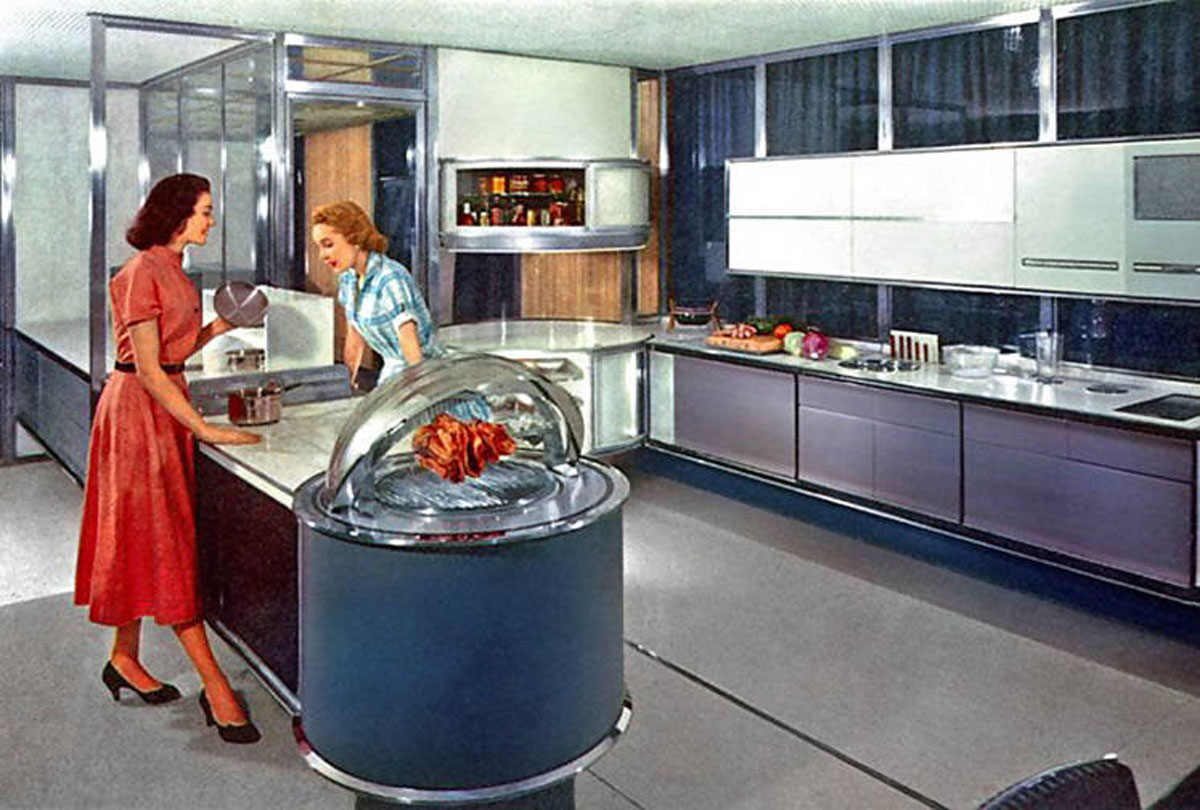Hints & Tips
By Admin
How to Save Power when using Common Household Appliances
So your home appliance isn’t working as it should and you’re thinking about replacing it with a new item. Typically those in the market for household goods are persuaded by 3 factors: style, efficiency and price.
In this report we will outline the way your appliances consume power, and help you weigh up the benefits of new versus old technology.
The Dishwasher, Secret Power-Mad Device Of The Kitchen…
Most people wouldn’t automatically assume that their dishwasher is one of the most power hungry of their household appliances. But, in most cases, it most assuredly is! The stats say that 99% of people with dishwashers use them once a day, and about 50% of people with dishwashers use them twice or more a day.
This level of power guzzling is due to the high frequency of use. However, it also relates to how much power a dishwasher will typically sap per hour.
Typical Energy Consumption
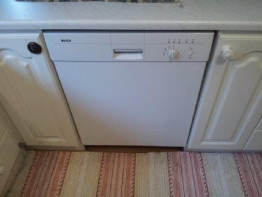
Most dishwashers are equipped with an element that uses a minimum of 1800 watts of power. If you do some quick math, you’ll find that for every hour this household staple is in use it will consume about 1.8 kilowatts of energy.
Considering the average Australian household uses about 14 kilowatt hours a day, this makes for one big draw item on its own (especially considering how many powered appliances rely on in the modern household).
The Benefits Of A Tempering Valve
The average “on time” for a dishwasher’s elements is between 60-90 minutes per normal cycle, but depends heavily on the temperature of incoming water. If the water is stone cold it will take longer to heat (this is where we all should pay great attention when it comes to saving power). If your home is fitted with a hot water system, which is in turn equipped with a tempering valve — this can help a whole lot.

How Do They Operate?
This solution limits water temperature to 50 degrees. It is perfectly safe to connect your dishwasher to the hot water service and if you have a gas powered water heater you’ll make big savings.
However, if you’re using electric storage then you’ll still benefit from the economy of scale (12 litres out of a 250 litre tank isn’t going to drop the temperature or increase operation time by any measurable value but you’ll notice when there is cumulative volume). Connecting to hot water using a tempering valve means heating the water 10-20 degrees instead of 40-50 degrees. In some cases in units with a 50 degree cycle temp the element may not come on at all.
In assessing an average case of heating water from an incoming temp of 18 degrees to the cycle temp of 65 degrees, we are looking at a 47 degree increase in temp. If the unit’s intake water is at 50 degrees then the water only needs to heat 15 degrees more. That means a whopping 67% saved off your regular power usage!
Why Don’t We All Use Them Already?
Do tempering valves sound too good to be true? Actually, they are pretty obvious and simple things.. So why is it that most dishwashers are connected to the cold service? As per usual, the manufacturers of electrical appliances build their appliances and make dishwasher installation recommendations based on worst case scenarios.
In years gone by, hot water wasn’t regulated all that well and could easily hit 70 degrees. Unless the inlet valve was built to tolerate such temps they would quickly fail. These days we have far stricter requirements on hot water tempering — even the cheapest inlet valve can comfortably tolerate 50 degrees.
So when considering shopping for a dishwasher it’s actually far more important to consider how it will be connected than what those energy rating stars mean on the front! We can help fit a tempering valve, alongside providing all types of dishwasher repairs and service.
Dryers… Are They Really That Bad?
Absolutely! It really doesn’t matter what dryer you use, they will all consume a massive amount of power, and this especially so when they are installed in apartments.
Albeit, some advances have been made in getting them to be slightly more energy efficient, but in reality dryers are the first place winners in the power-guzzler awards (not a good thing at all).
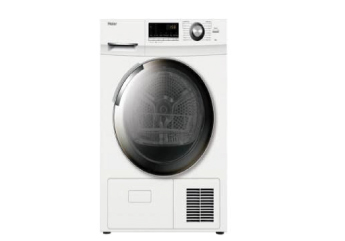
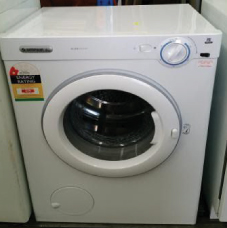
Typical Energy Consumption
Conventional dryers (you know those wall mountable ones), are actually incredibly simple machines. They consist of one motor, one heater, and a controller (digital or timer). And that’s the whole show right there, folks!
The usual element power here is 2200 watts, so 2.2 kilowatt hours per hour of run time, with the usual cycle time of 90 minutes. That equals 3.3 kilowatt hours per cycle (not including the power used by the motor).
Using Your Washing Machine More Wisely
How do you save money on this bleed-out? Well, it’s actually not all that complicated. It starts with your washing machine, yes… that humble old clothes washer. There are a number of ways to use the settings on your machine to make the whole process of washing and drying your clothes far more economical. Here are some handy tips:
- Use the fastest spin speed possible —if you use a low spin speed then your clothes will be more saturated and therefore take longer to dry.
- Don’t over dry your clothes, set the dryer for 90 minutes but check the load every half hour. If your clothes are 95% dry, take them out and let them steam off on a drying rack — the latent heat will finish them off.
- Only dry what you need immediately, throw what clothes etc. you won’t be needing for a few hours on a drying rack, inside or outside, they will dry.
New Dryers On The Market
What about new models in the dryers? Surely, they have got better over the years? You would think so, but the fact is this machine is still notorious for racking up those power bills, even when you think you’re buying something special and newfangled.
Condenser Dryers
Condenser dryers are the new wave in products currently available on the market. But as most who have them would know, they take longer to dry than conventional dryers — sometimes by double the time! Plus, they still have elements so they consume power the same way as their older contemporaries.
Heat Pump Dryers
Don’t get us started on heat pump dryers; not only are most just a high pressure air conditioner, they are so expensive you could run a conventional dryer for a year on the price difference. Also, they are known to be woefully unreliable.
Two-in-one Washer Dryer
For those of you running who think you’re running a washer dryer with an energy expenditure that’s two-for-one? You might be sadly mistaken. The problem with the washer dryer is pretty simple; it starts drying with a sump full of water. So, what you get is a thorough steam cleaning of your clothes courtesy of a 1500 watt element.
But the process takes nearly twice as long to dry compared to using a separate washer and dryer. We get that some folks are pressed into this with their tiny apartment laundries. However, you’d honestly be better off just a clothes airer!
What About Washing Machines…Are They All The Same?
Surprisingly yes! Pretty much whether you choose a top or front loader; the power use is practically the same across all models. At least, that is true when you use a cold wash. But the thing is; not all front loaders have a hot water connection.
Top Vs Front Loader
This is the reason why: if you own a front loader that takes cold water only (or only has cold water connected) then your machine turns on its inbuilt heater (even when cold wash is selected). You see, the water temperature must be a minimum of 25 degrees for detergents to work.
Top loaders get around this because they use considerably more water, therefore there is more friction/ agitation thus the detergents can work at a slightly lower temp. So, if you’re in the market for a new washer then, as far as juice is concerned; front or top loaders at the same weight class are likely to be nearly identical. If you’re after existing laundry appliance repairs and service we can assist with that.
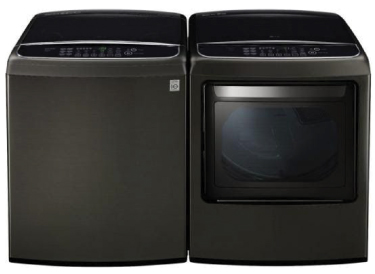
A Word On Refrigerators…
The refrigerator, the hallmark of 1950’s urbanisation, hasn’t really changed that much over the years. From the humble “Silent Knight” of the early 1900’s, to the latest in variable cooling capacity fridges; all iterations of this machine are engineered with the same heart — your omnipresent compressor.
The Historic Machines
But, boy, haven’t the upgrades come in quick on these. The original piston compressor of the early fridges took many thousands of watts to start and ran for hours on end. Keep in mind, power at this point-in-time was dirt-cheap. So no-one paid much mind to the whopping amount of energy consumption of these machines; at least not like they would today!
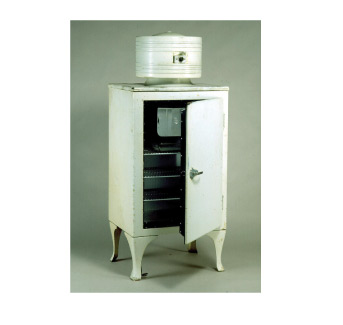
Engineers spent decades trying to improve the efficiency and size characteristics of the humble compressor. But it wasn’t until the early 2000’s (when inverter technology could reasonably be fit in a fridge and for a reasonable cost) that 3 phase compressors started to arrive.
LG developed the linear inverter (an electromagnetic shuttle valve compressor). Samsung followed with the inverter compressor (a standard rotary piston compressor with a 3 phase induction motor).
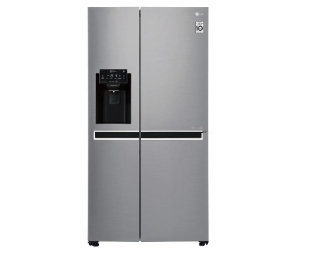
The Modernised Models
The power savings were huge. Instead of a 5-7 amp instantaneous starting current, we were introduced to 1 amp. Coupled with increased efficiency of evaporator and air flow design, temperature control and insulation; these modern fridges became cheaper to run than your television.
The Repair Costs
These fridges have come to be super friendly to your wallet and on your monthly power bill. However, what happens when you need to repair any of their many vital systems? Well, it’s a big ouch (to put it lightly). Price aside, give your fridge five years or so on-the-clock and you’ll find parts become scarce to non-existent.
So (as the story goes) the better we try to build something, the more technical it becomes and the more frequently it breaks down. Thus, typical repair costs eat into, or in most cases totally torpedo, the money you saved on power.
Hence, the “old Kelvinator” can be found in back sheds and garages everywhere, happily chugging down power for three decades or more without a whimper. Whereas your flashy new inverter fridge will see the dump site within ten years, and that’s a guarantee!
Using Your Refrigerator’s Settings To Your Advantage
So after all is said and done, where are the power savings to be made here? It’s all in the settings and how you use them. Need fridge or freezer repairs? We’ve got more info on our page, plus a summary below:
- Don’t buy a huge fridge if there’s only a couple of people using it and keep it stocked (but not over loaded).
- Use bottles of water if you find you always have big gaps on the shelves, these will cool down and keep the cooling unit off for longer as they act as a “heat sink”.
- Don’t put hot food in the fridge — just don’t!
- Keep your fridge settings at 3 degrees for the fridge and -19 for the freezer, this will maintain your dairy at the right temp range and your frozen goods at deep freeze temps.
- If you’re going to be away for a couple of weeks clean out the fridge and switch it off (leave the doors open).
Considering Your Cooking Appliances…
The final item to consider (and briefly, mind you), are your oven, cooktop or free standing stove/cooker. Here are a couple of things you should know. Remember, we can help with oven and cooktop repairs.
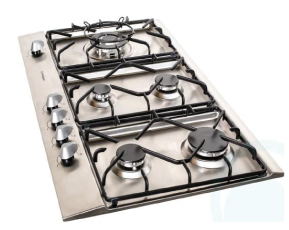
Gas Over Electric
If you’re using electric appliances and can move to gas, we heartily recommend doing it! Initially, the transition will cost you up to a couple of thousand dollars, but you’ll recoup all that and more by way of power savings and in overall longevity of your unit. You see, gas appliances last decades without repair. The same cannot be said for their electric brethren.
Latest Innovations
The latest innovation in cooking is induction. This is seen as a direct replacement for gas as induction cookers are really fast to heat up, and the highest end models have incredibly tight temperature regulation. The cheapest amongst these models have rubbish temp control — you would get better results cooking on top of your toaster!

These new induction cookers suffer from the same kind of engineering problems as inverter fridges. With impossibly complicated coils and computer-mounted switch mode power supplies all in close range of a super hot surface; it’s no big surprise that these systems are intrinsically flawed. The computer parts on induction cookers are prone to catastrophic failure. Plus, they cost a small fortune to replace.
Household Appliance Repair… It’s A Great Option!
At the end of the day, it’s while considering a repair of your older appliance over a replacement, If efficiency is the desired outcome, in most cases “old faithful” beats out new and flashy — all the way to the bank.
We hope that our handy tips might save you money, whether you inevitably opt for a sparkling new appliances or find more economical solutions utlising what you already have.
